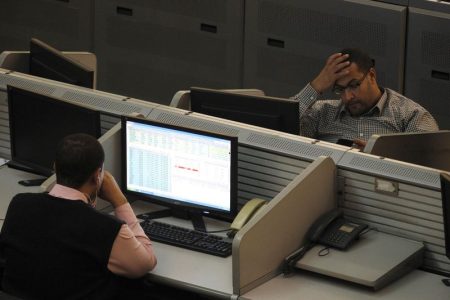By Rae Wee
SINGAPORE (Reuters) -Asian stocks swung between gain and loss on Monday as investors struggled to reach a consensus view on China’s economic stimulus promises made over the weekend which, though broad, were light on specifics.
Minister of Finance Lan Foan at a closely watched news conference on Saturday pledged to “significantly increase” debt, but left investors guessing on the overall size of the stimulus, a detail needed to gauge the longevity of a stock market rally.
“Most onshore investors believe Beijing’s decision to restructure local government and housing debt using central government funds is more significant than many foreign investors believe,” said analysts at Morgan Stanley in a client note.
The divergence was apparent on Monday, after shares in Hong Kong opened slightly lower and were choppy in early trade, contrasting sharply with their mainland Chinese peers which got off to a strong start.
The last traded a marginal 0.01% lower, while the CSI300 blue-chip index rose 1.6%.
Property stocks onshore and offshore, however, eked out solid gain as investors bet the latest stimulus measures could aid China’s beleaguered property sector.
The Hang Seng Mainland Properties Index advanced 2.2%, while the CSI300 Real Estate Index jumped 3.7%.
The mixed picture left MSCI’s broadest index of Asia-Pacific shares outside Japan down 0.11%, after having fallen 1.7% last week as the Chinese stocks rally hit pause.
Trading in Asia was thinned on Monday with Japan out for a holiday.
U.S. stock futures similarly edged lower, with losing 0.1% while Nasdaq futures fell 0.25%.
EUROSTOXX 50 futures and eased 0.08% and 0.05%, respectively.
Also in a blow to China’s growth outlook, consumer inflation unexpectedly eased in September while producer price deflation deepened, data on Sunday showed.
Reflecting the lingering concerns over the Chinese economy, the slipped 0.11% to 7.0743 per U.S. dollar, while its offshore counterpart fell by a greater extent of 0.2% to 7.0828 per dollar.
Oil prices also fell by more than $1 a barrel on Monday on worries about waning Chinese demand for the commodity. [O/R]
futures were last down 1.32% at $78.00 a barrel, while U.S. West Texas Intermediate crude futures fell 1.3% to $74.58 per barrel.
Still, the latest raft of stimulus pledges prompted analysts at Goldman Sachs to raise their real gross domestic product forecast for China this year to 4.9% from 4.7%.
“While we have upgraded our cyclical view on the back of the more forceful and coordinated China stimulus, our structural view on China’s growth has not changed,” the analysts wrote in a client note.
“The ‘3D’ challenges – deteriorating demographics, a multi-year debt deleveraging trend, and the global supply chain de-risking push – are unlikely to be reversed by the latest round of policy easing.”
China’s third-quarter GDP data is due on Friday.
Elsewhere, movement in currencies was largely subdued, with the U.S. dollar continuing to draw support from reduced bets of an outsized Federal Reserve interest rate cut next month.
Against a basket of currencies, the greenback hovered near a seven-week high at 103.03.
Traders have priced out any chance of a 50-basis-point rate cut from the Fed in November after data last week showed consumer prices rose slightly more than expected in September and recent economic releases have also underscored strength in the labour market.
Sterling fell 0.13% to $1.3050 while the euro eased 0.11% to $1.0923.
A reading on UK inflation is due later this week, as is an interest rate decision from the European Central Bank.
Read the full article here











